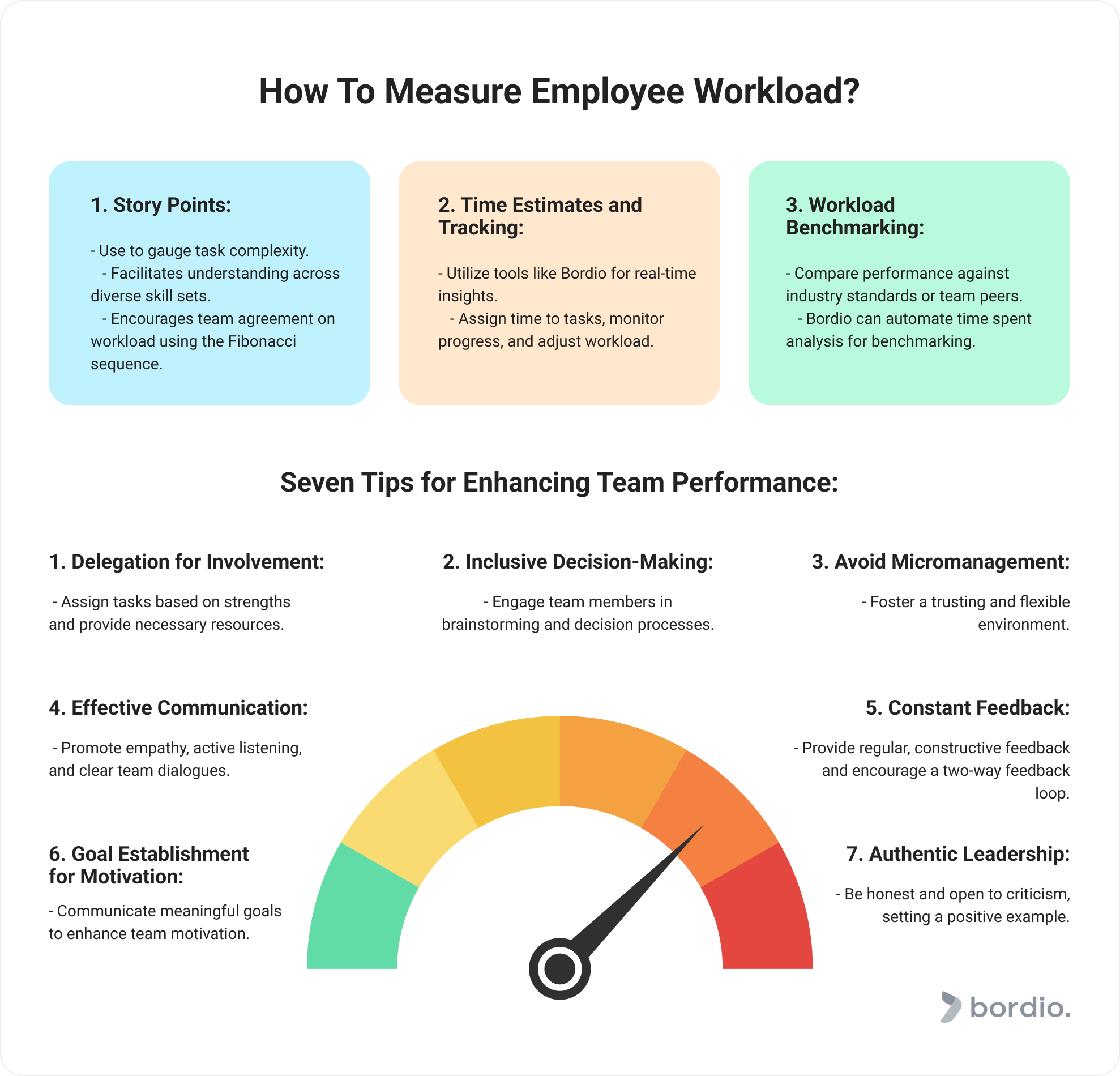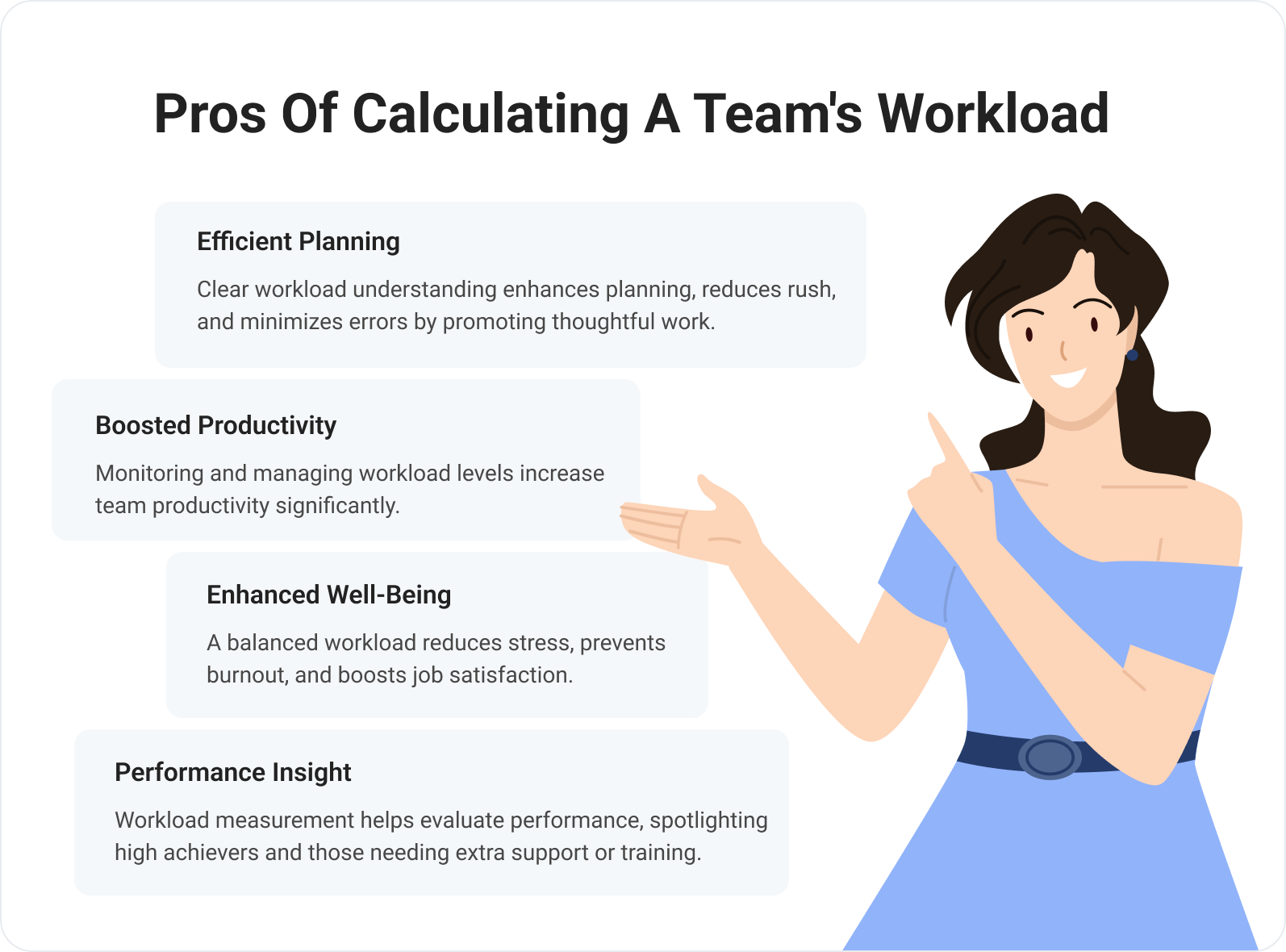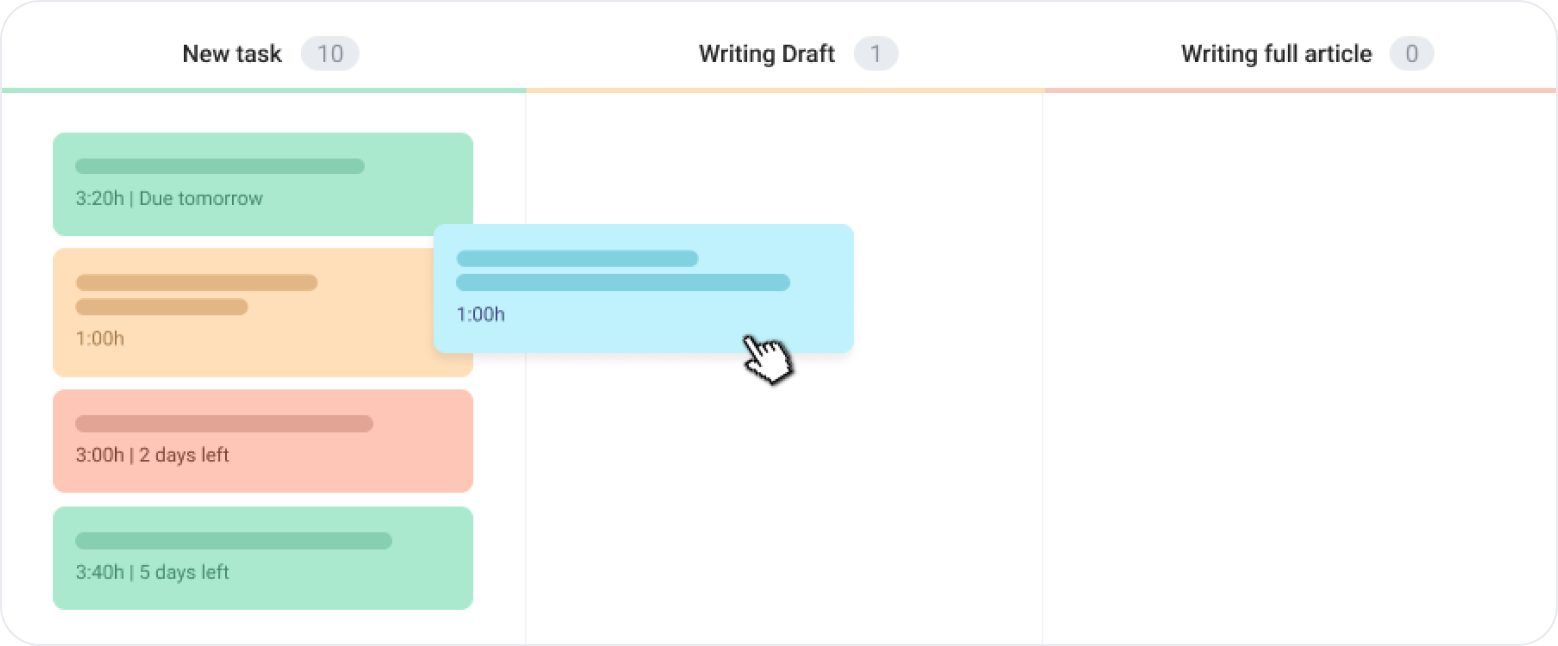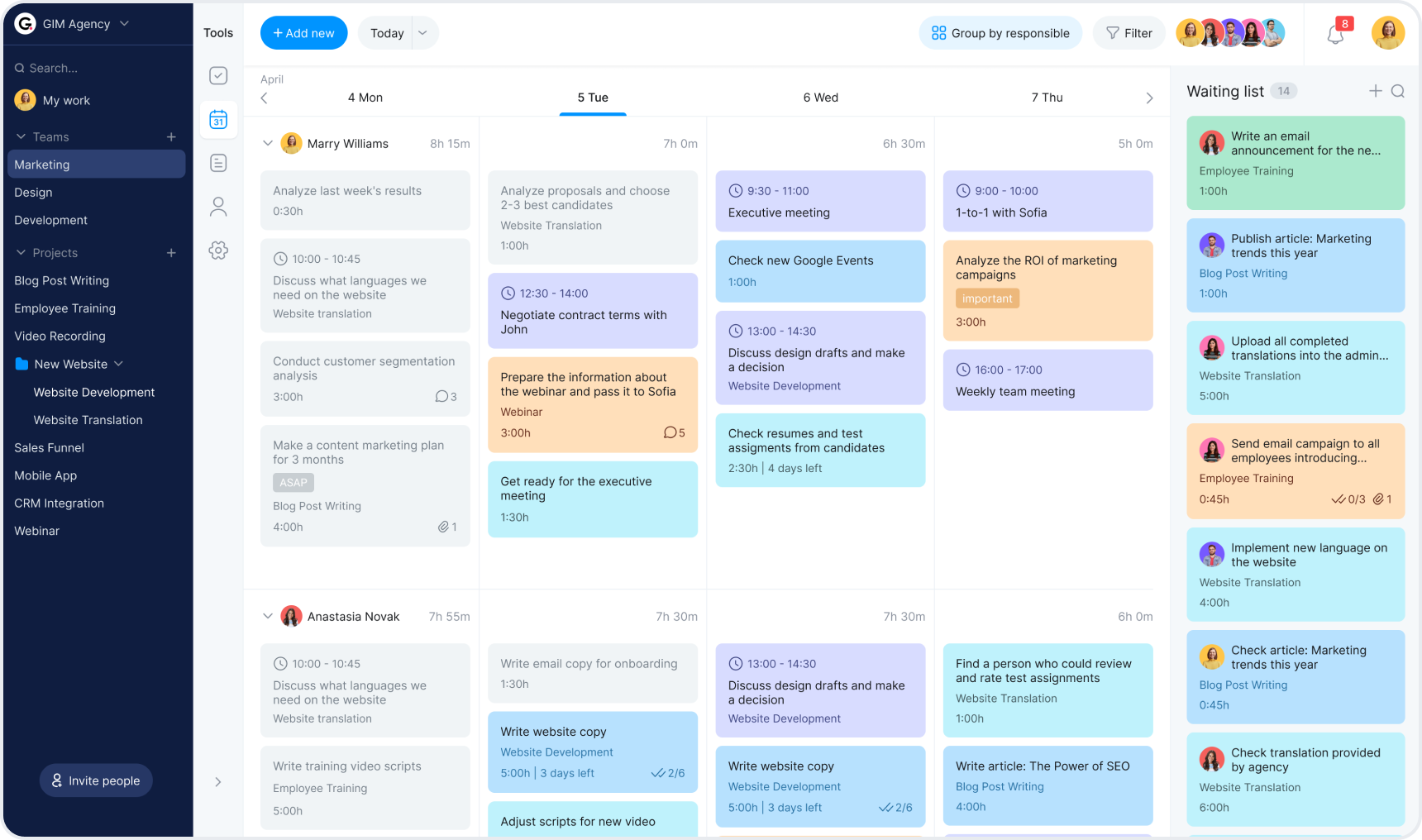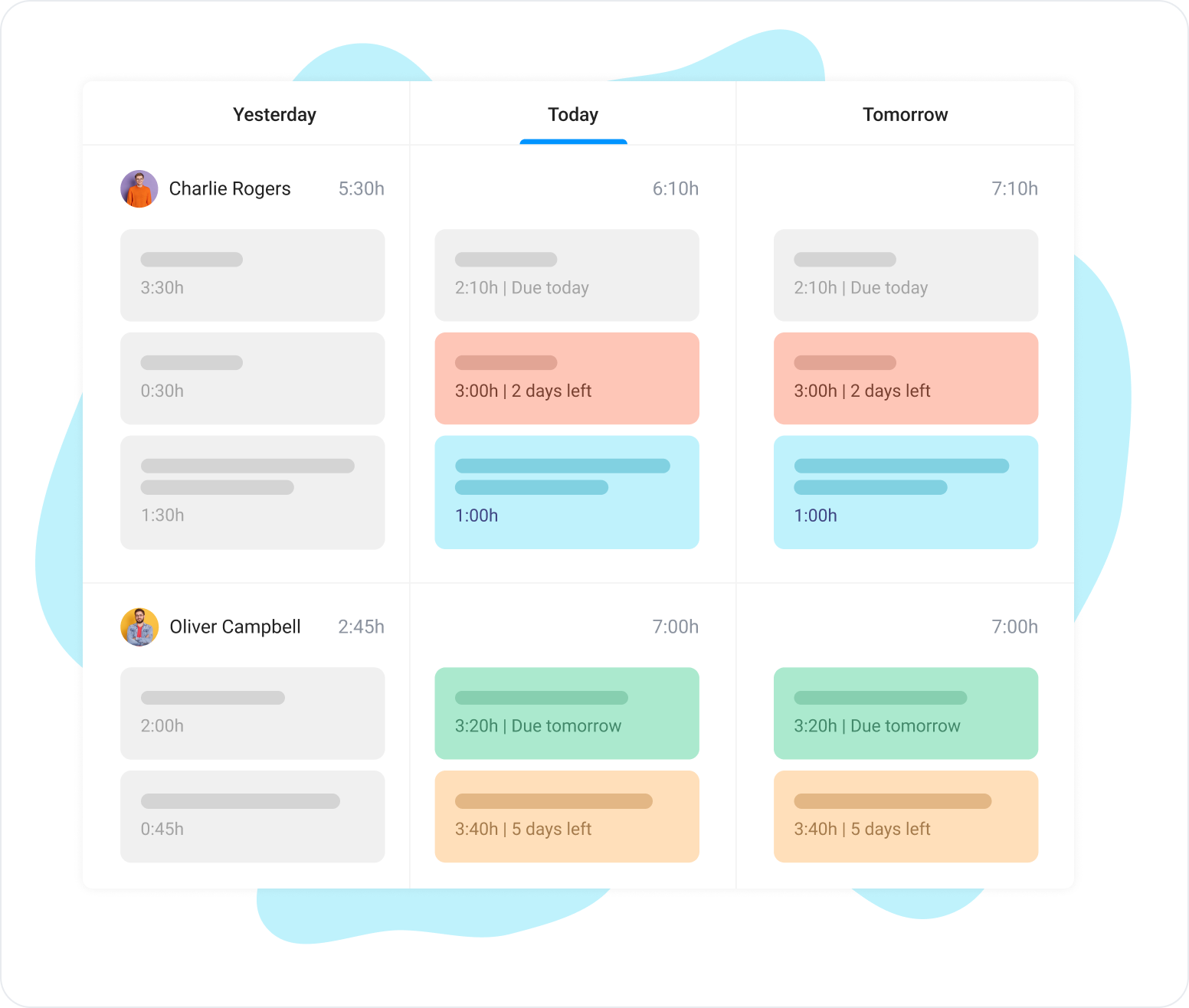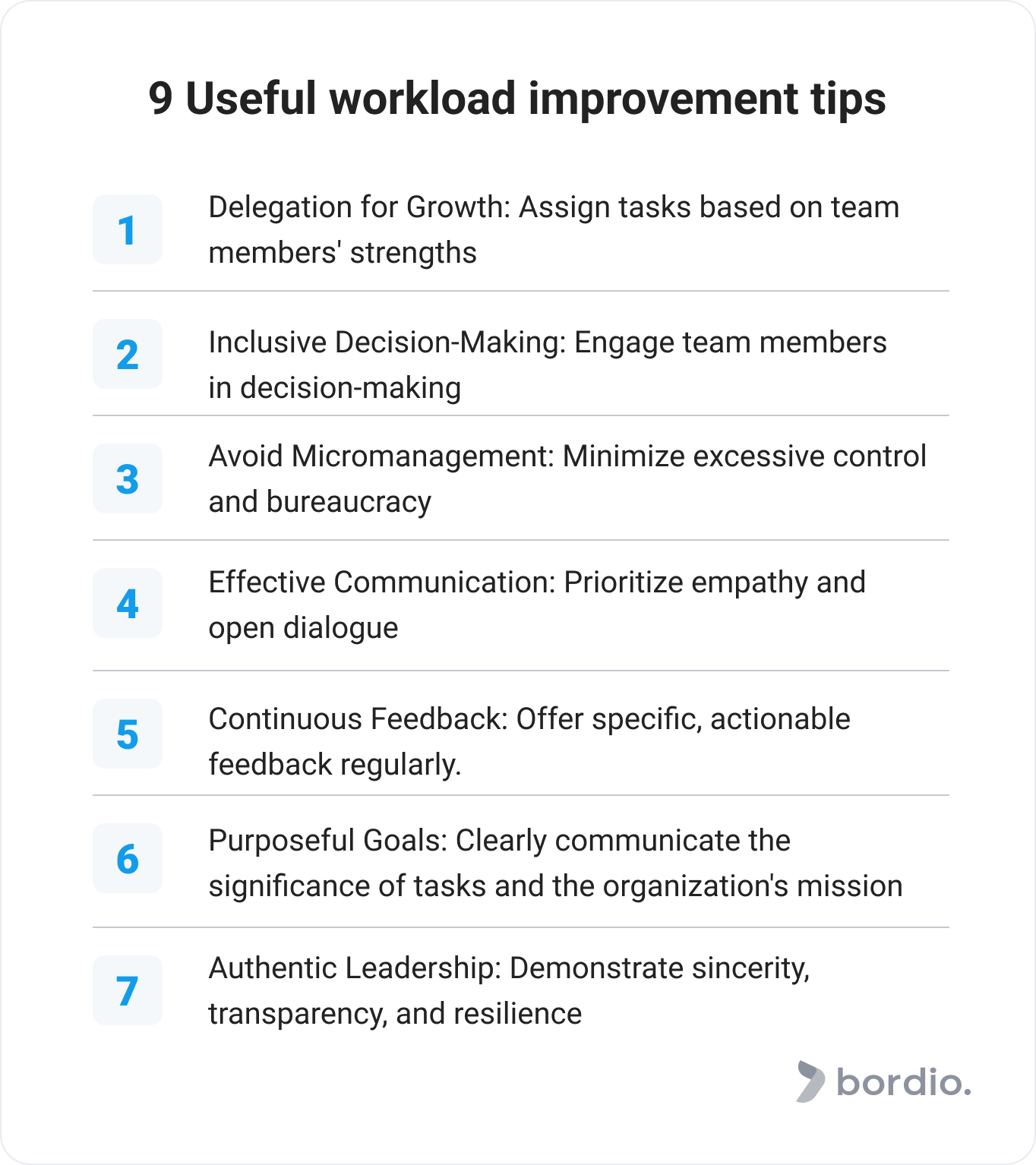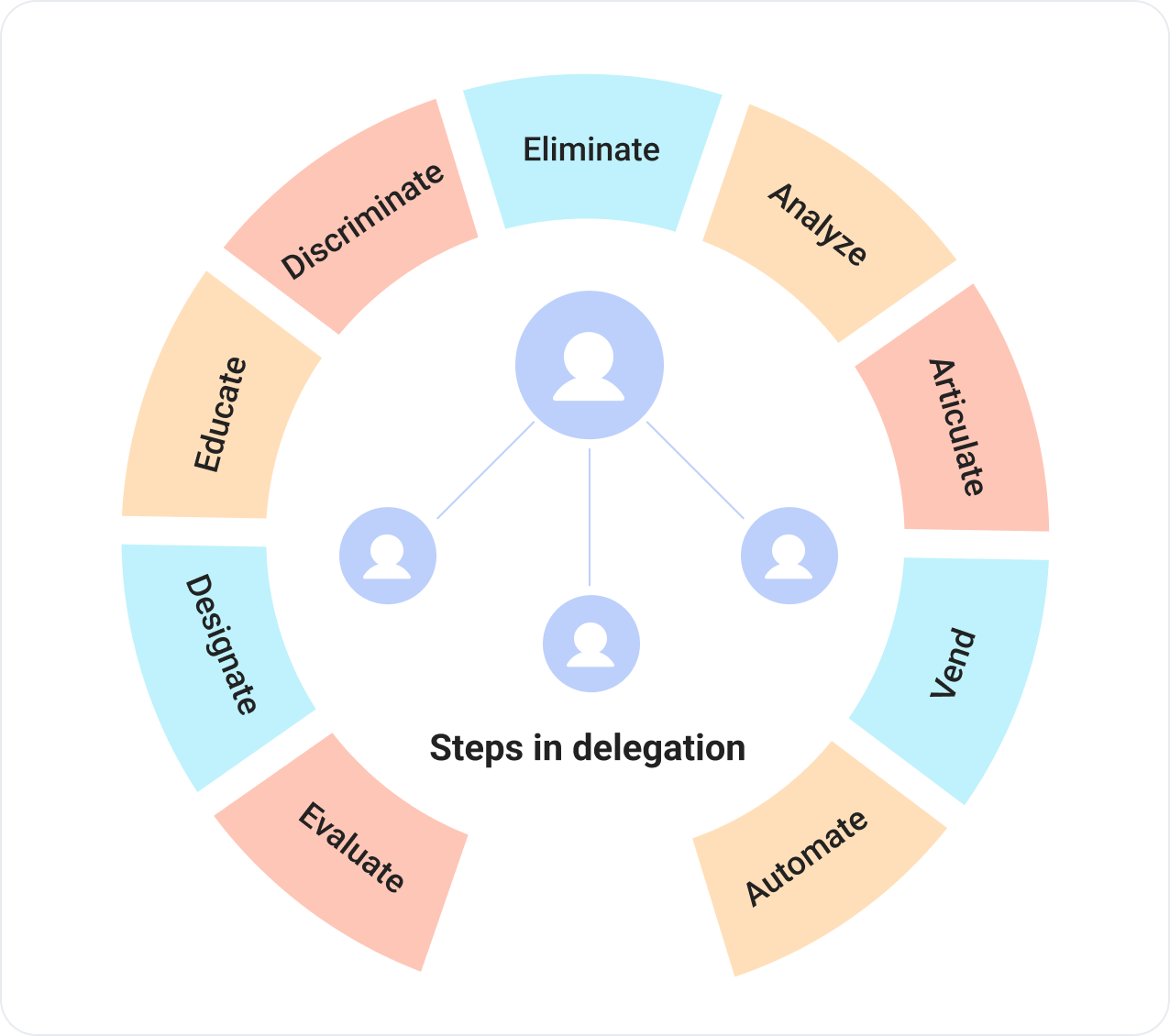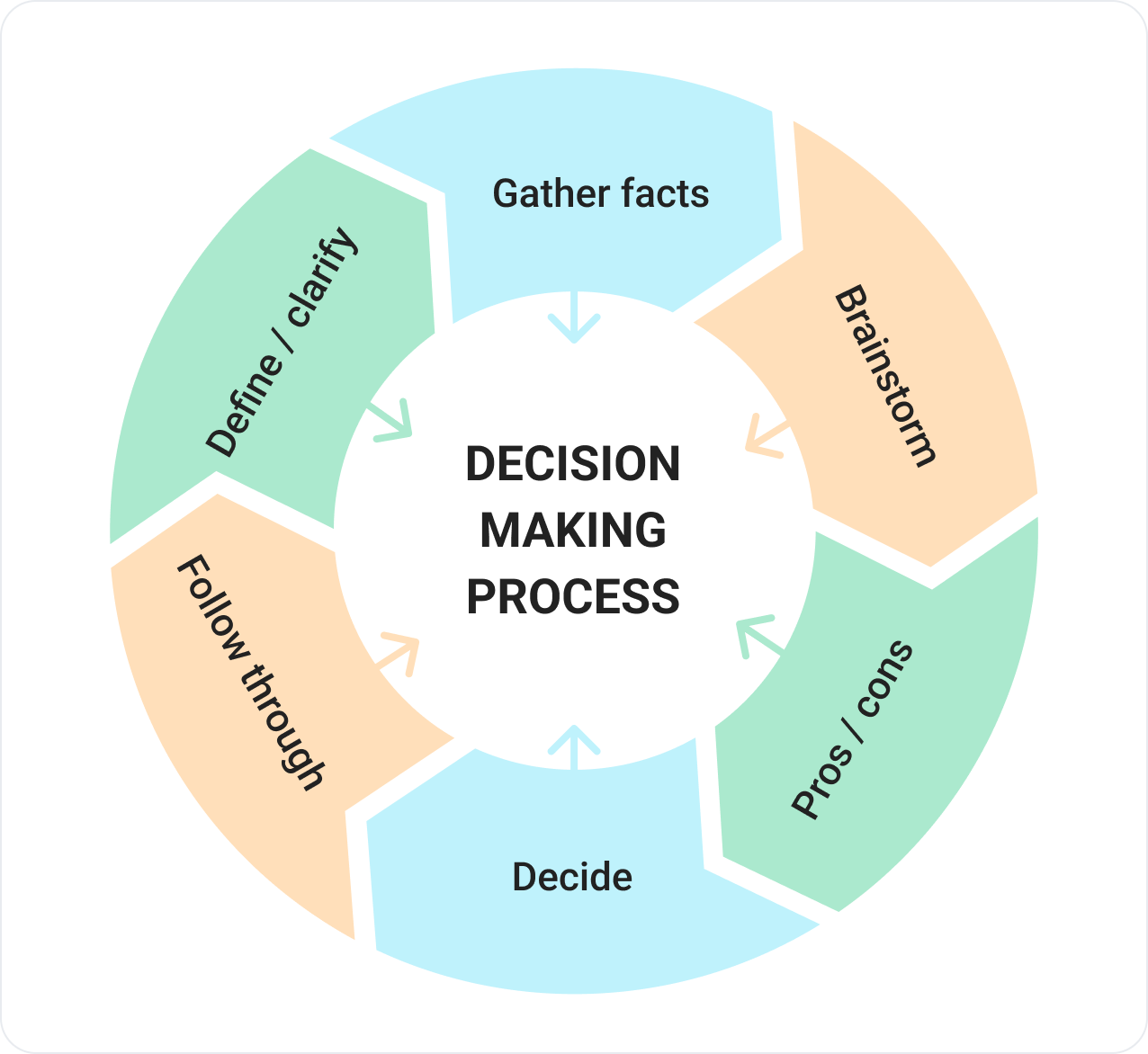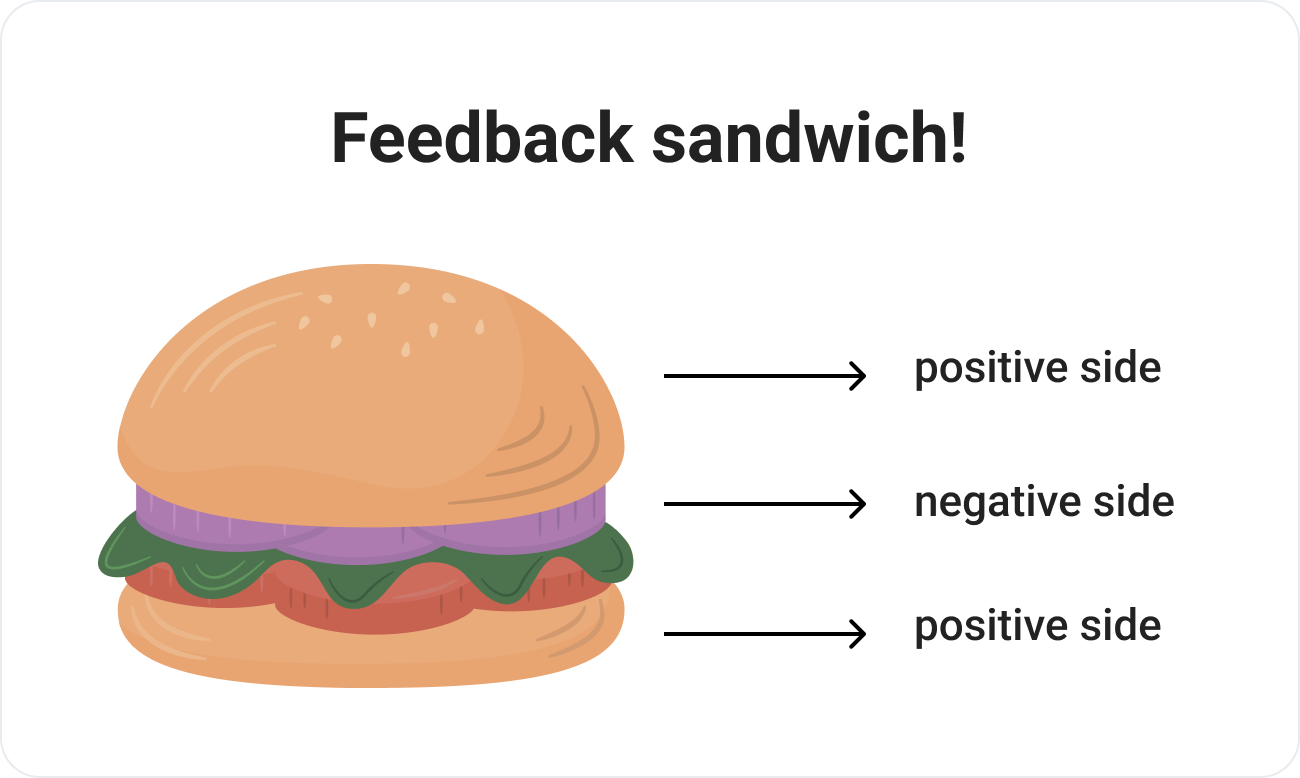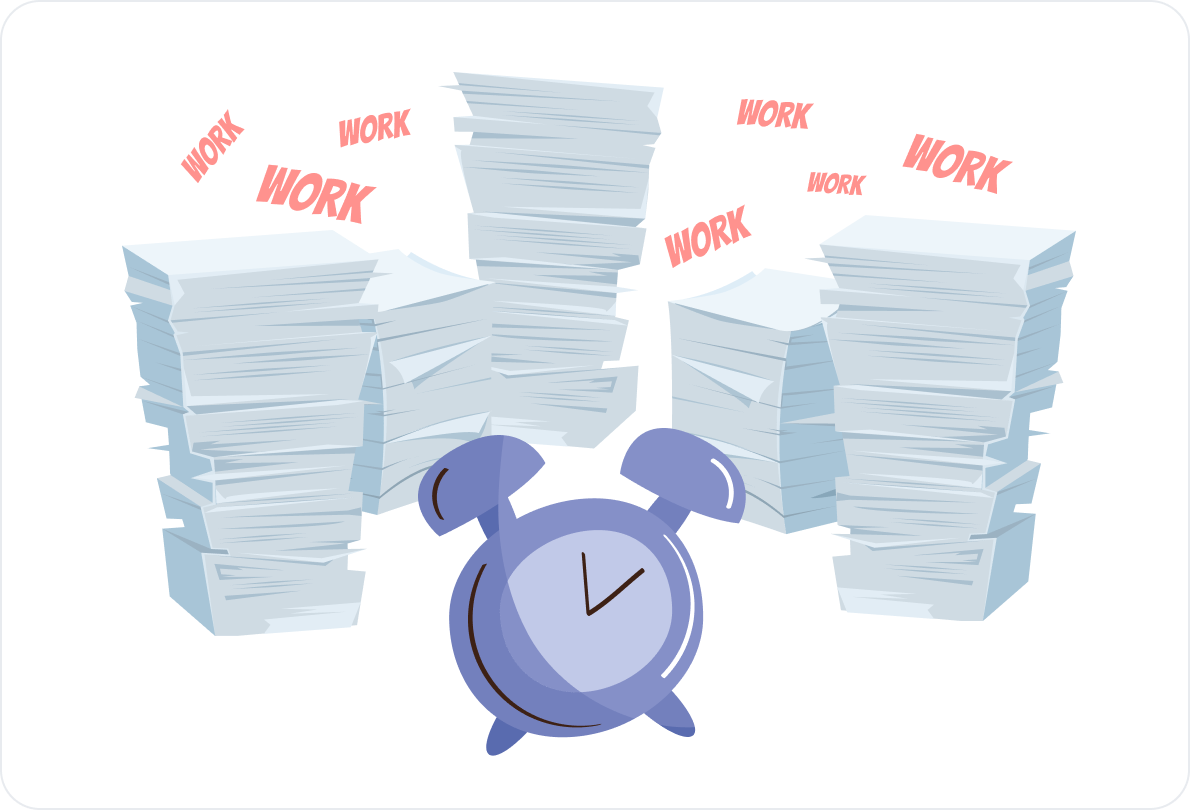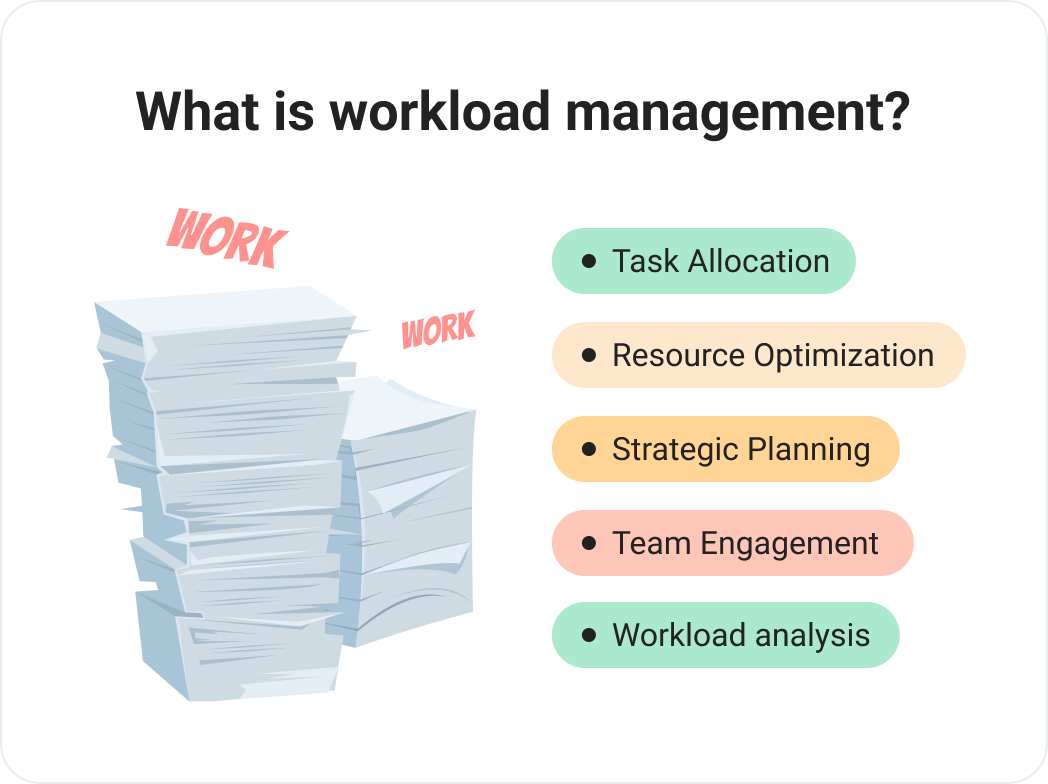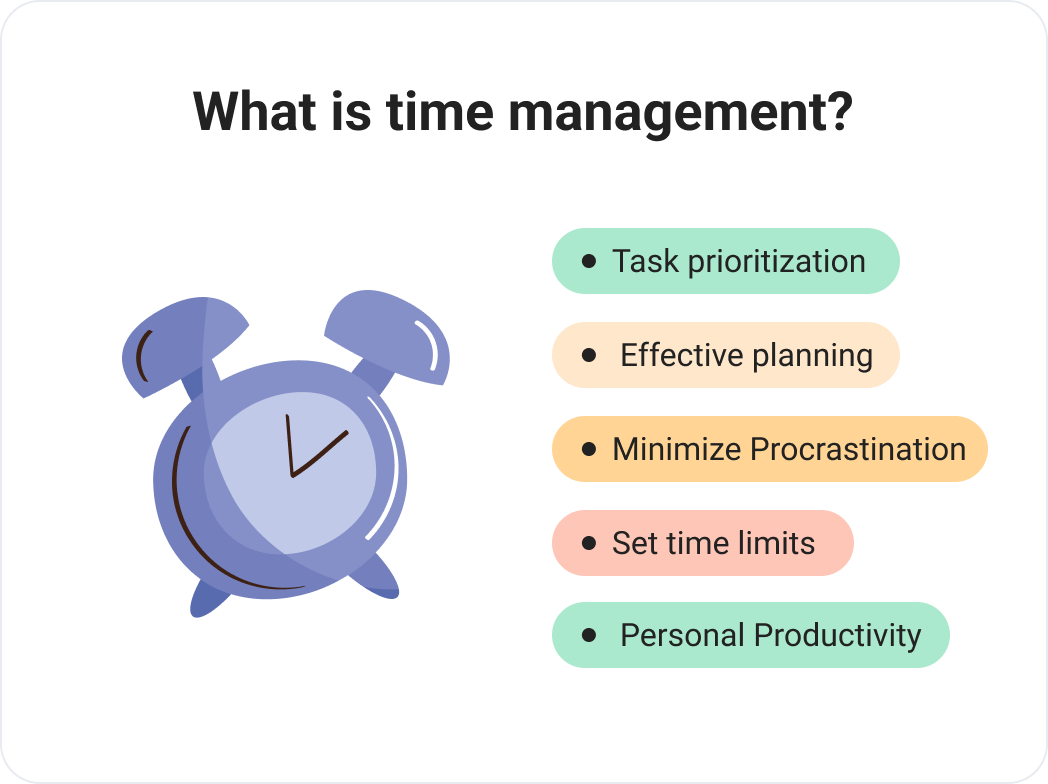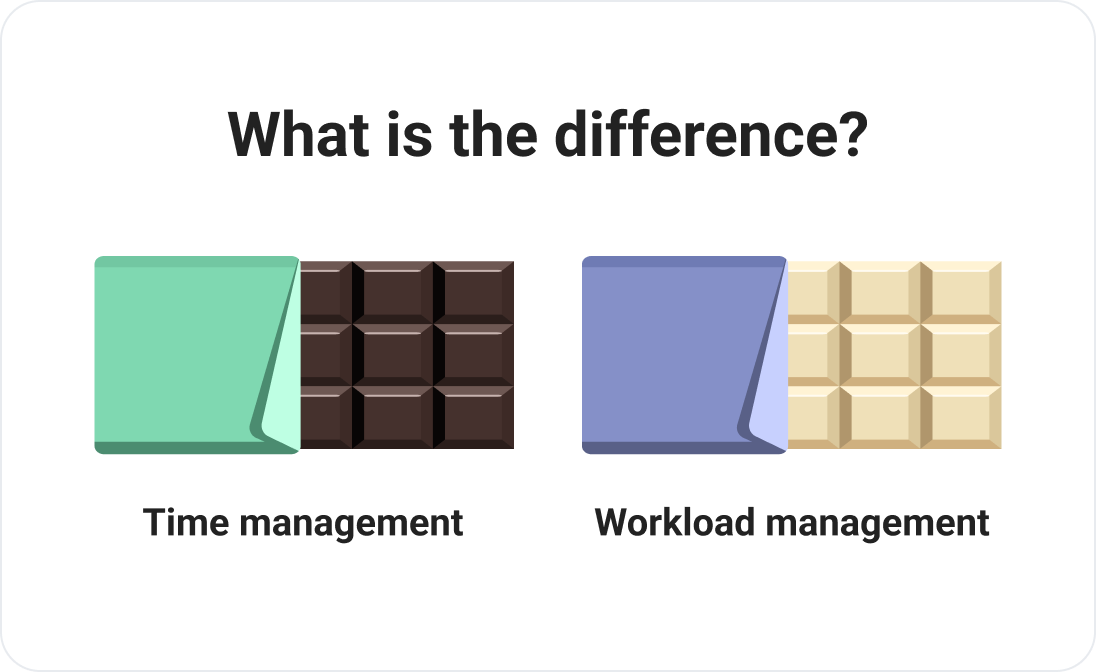Is your team suffering from overwork? Are you unsure why productivity is so low and why you can’t meet deadlines? Is the number of mistakes made by your pro-team members driving you crazy?
Efficiency and effective project management are linked to employee utilization – and to navigate the maze of tasks and deadlines, you need to understand how to measure employee workload levels. Let’s boost your team’s performance by understanding how to measure the team’s workload and finding the best techniques!
Starting from scratch: What is employee workload?
A team’s workload is like a complex dance of tasks, projects, and responsibilities that people complete within a given timeframe. Think of it as the rhythmic heartbeat of the organization, with each employee contributing their unique notes to the symphony of productivity. But what exactly does it involve?
At its core, an employee’s workload includes all the tasks, responsibilities, and projects assigned to individual team members over a period of time. This amount of work assigned to an employee is expected of them within a certain period of time. However, the components of team workload go beyond simple tasks; they cover a diverse spectrum ranging from planning a project, analyzing the team and team member strengths and weaknesses, proper resource allocation and task assignment, correct deadline setting, supervising the project in progress, and much more.
What pros are there to calculating a team’s workload?
Better planning
Having a clear understanding of the workload will allow you to plan work efficiently and meet deadlines better, and workers will not be in a rush. Working slowly, they will be thoughtful and make far fewer mistakes.
Increased productivity
While working on a project, if you monitor the workload level of employees and help them cope with problems – the team’s productivity will increase many times.
Improved employee well-being
A balanced workload prevents employee overload, reduces stress and the likelihood of burnout, and increases overall job satisfaction.
Performance measurement
Measuring workload serves as a metric for evaluating performance and identifying team members who are high performers and those who may need additional support or training.
Effective workload management is an administrative and strategic move to create a work environment where balance, productivity, and employee well-being thrive. Being a good project manager means being able to cope with a high workload, keeping employees in a good, healthy work-life balance, and getting better project outcomes. So, let’s get to the details – how do we measure workload?
How to measure employee workload?
And so when we’ve broken down what workload management is and what the benefits of improving your skill at measuring it will bring, let’s finally understand – what this magic wand is made of and how we use it.
Technique #1: Story points
One of the best techniques for calculating the workload level of your team is “story points.” This technique allows team members with different skills to communicate and agree on the task’s complexity level using numbers. You can use the Fibonacci sequence where each next number is the sum of the previous two: 1, 2, 3, 5, 8…
Think of it this way: if you have a small, easy task, you call it one story point. If another task needs twice the work, you give it two story points. And for really tough tasks, you might give eight story points. This way, your team doesn’t have to guess how long each person will take to finish a task. Instead, they can see that some tasks need two or three times more work than others.
This method is used during planning to understand the total workload and analyze it while working on a project. The idea is that you can’t have employees overstretching themselves like athletes out of their weight class. In order to use story points, you will need to teach team members and learn yourself to assess the complexity of the task as a manager. To do this, you will analyze the group’s past performance and the tasks’ success, then prioritize and delegate tasks to the participants. It is important that the participant can disagree with the complexity of the task, and it is important to be flexible.
The solution is to find proper team management software. With Bordio, you can add new tasks to your team’s calendar or put them on a waiting list to schedule later. You can set how much time each task should take and add extra details in the task notes. Also, you can color-code tasks by how hard they are. For example, make a simple task like ‘Create five new Instagram posts for your business page’ green if it’s worth one story point.
This way, you will create a convenient backlog with workload analysis, considering that not all tasks are the same, and get into the subtleties of task complexity. Assign weights or points to tasks based on complexity, allowing for a more nuanced workload assessment beyond a simple number. These details will help you later.
Technique #2: Time estimates and time tracking
Leverage the power of modern technology, from task-tracking apps to collaboration tools for teamwork. These tools provide real-time insight into how employees allocate their time and identify workload patterns. Luckily, Bordio is like a compass here – helping to make the journey easier.
Here you can assign tasks and give them a certain amount of time to complete, thus shaping the workload level of participants. But that’s not all. Bordio lets you see how busy your employees will be. On the team’s level, you can check who is working on what, dive into the details of their time plans, and understand how much work each person has coming up.
Then, you can compare how the planned time has matched up with the actual completion of the task. Again, open the schedule page in your team to see all team members’ tasks and their time estimates. Now, you just have to analyze their productivity and workload levels. How do we do it? Simply look at how many tasks were planned and how many were done, how much time was planned to be spent, and how much was spent. Further, employee performance metrics also serve as a tangible indicator of the impact of workload on par with the timely completion of projects.
Technique #3: Workload benchmarking
Benchmarking is comparing your workload against the industry standards of comparable organizations or between colleagues. It offers a valuable gauge for optimizing workload and gaining insights into your team’s performance. The idea is to see if your level of productivity and level of exertion is good compared to someone else. Benchmarking can be done either between companies similar to your industry or between members of the same team to compare their performance. Knowing where your employees stand compared to their peers provides a contextual perspective that is critical to making informed decisions. Let’s look at a few examples:
Imagine you’re managing a design team and expect the landing page design to take 15 hours of work. You can now use this benchmark to gauge how your team members are performing on the task.
You can also compare them with each other and see who is better at the task. Bordio is here to help you. It will allow you to simplify and automate the process – showing you how much time each team member spent on specific tasks and in general – and all you have to do is analyze the information.
How to improve the workload of employees: 9 Useful tips
Our journey through the workload maze is in full swing – it’s time for some helpful tips for those who want to become productivity expert and have their team be the best and most effective under workload conditions!
1. Delegation for involvement
Delegating tasks to team members opens the door to myriad benefits intricately intertwined with their engagement and value in the workflow. When a leader assigns tasks, it’s not just a transfer of responsibilities; it’s akin to handing over the keys to personal and professional growth.
You’ll need to play to each team member’s strengths, determine their level of expertise, and provide tasks that match their skills. Not only does this increase the efficiency of task completion, but it also builds employee confidence in their abilities.
The next step is providing the necessary resources – both informational and material. This includes providing the necessary support, training, and access to information that may be useful for the task.
2. Inclusive decision-making
One of the most critical components of effective management is including team members in the decision-making process, which encourages the pursuit of creative solutions. Experience demonstrates that the finest solutions and accomplishing shared objectives can result from constructive confrontation based on various opinions.
Competencies and backgrounds from varied backgrounds are brought together in effective teams. A diversity of viewpoints fosters innovation and creativity. Ensure safety in a team setting where each member feels their viewpoint is respected. Establishing open communication and embracing differences of view can help achieve this. The team has a focal point when goals and objectives are communicated clearly. This keeps goals clear and focuses efforts on achieving particular outcomes.
The actual steps you can apply are:
- Organizing regular brainstorming sessions can be a fruitful space for expressing different ideas and viewpoints.
- Maintain a culture where debate is seen as enriching ideas rather than conflict.
- Evaluating its effectiveness is important once a decision has been made, and learning lessons for future steps is important.
3. Avoid the pitfalls of micromanagement
Micromanagement is the over-dimensional attention to small details of a project. Micromanagement in a project manifests itself in the following situations: constant monitoring, distracting people from their work, giving detailed instructions even on small steps of the process, and constant checks, which can cause a feeling of distrust among employees. Another sign that you are carried away with project management can become excessive bureaucracy and a refusal to be a flexible and understandable leader in unexpected situations. This will undermine employee confidence, so you must create a favorable-experimental atmosphere.
4. Good communication – key to success
Poor communication has become part of a 21st-century work culture. It can lead to project delays, stress, and lost sales. Show empathy, actively listen to concerns, and create an open and collaborative dynamic. Encourage team members to communicate with each other because they are like a team of astronauts who must learn to work as a team, which is directly related to the team’s workload. This applies to work dialogs, rallies, surveys, and personal polite communication.
We cannot fail to mention such a tool as Bordio – task management software used as a form of basic communication. Task managers can help not only with resource allocation as a workload management tool but also with regular review. As a manager, you will be able to see the workflow and check on the project, and in the task settings, you can write about the details of the task, thus communicating with the team. Also, let’s not forget about such a handy thing as Notes, where the team can write down their work and ideas and then share them with colleagues.
5. The process of constant feedback
Seamlessly flowing from the communication theme is feedback. It is important to provide constructive feedback to team members on a regular basis, beyond annual reviews. Make it specific and actionable to strengthen working relationships, and team members will feel respected.
When given good feedback, use the sandwich method – say one positive side, then the negative, and then the positive side again. It will help the person understand their strengths and weaknesses to start working on them. For example, in this way, you can gradually teach the employees to cope with their own workload and increase employee productivity. It is equally important to solicit feedback from your team to identify areas for your growth. Gradually, the entire team becomes a better version of themselves.
6. Establish a goal for better motivational
You have to make sure that what you do has meaning – it’s like washing your face in the morning, knowing that you’re doing it to be clean and wake up, and more complex tasks need that kind of deep meaning. It is also crucial for team members to know the meaning of their work and the organization’s overall purpose. Getting the message across goals openly will increase motivation. A shared sense of purpose promotes employee satisfaction and product/service quality. Link individual efforts to the mission of the organization.
7. Genuine leadership
Sincerity, transparency, and consistency in expressing one’s personality and ideals are the characteristics of authenticity in the context of leadership and personality. As we all know, a wise captain is critical on a ship, and the same is true of authentic leaders in the workplace.
The key characteristics of an authentic leader include:
- Sincere
- Honest
- Consistent
- Open to criticism
The sincerity and openness of authentic leaders elicit respect and support from others, which builds strong bonds within the team – and sets an example for others. Under challenging circumstances, by demonstrating courage and self-control. Set a positive example for others by being resilient and taking inspiration from the great men and women of the past.
Workload management and time management – what is the difference?
Although workload and time management are closely related concepts often misinterpreted, they refer to separate aspects of efficiency and productivity. Let’s examine them to understand the differences and purpose of each element.
Workload management:
Workload management is an effort to increase efficiency among teams. It is a strategy that plans, estimates, and tracks all project tasks you need to do. This is where workload management varies from time management. As a result, managers and the team are better equipped to balance the workload demands of each person and group.
It encompasses a broader perspective of the workplace, considering the number, nature, and match of responsibilities to the competencies and skills of team members. Workload management is necessary for:
- Maintain the balance and employee satisfaction.
- Get better results and have good team dynamics.
What does workload management consist of?
- Task Allocation: Allocating work to team members based on their experience, availability, and ability to get the job done.
- Resource Optimization: Ensuring that each team member is used effectively and not over- or under-utilized.
- Strategic Planning: Forecasting, planning, and directing activities by the project schedule and corporate goals.
- Team Engagement: Improving team productivity by ensuring effective communication and teamwork.
- Workload analysis: Workload analysis helps to understand weaknesses and strengths to create a balanced workload.
Time management:
Time management is a specific type of workload management that focuses on effectively using time to complete activities and achieve goals. It involves using individual or group time management techniques to prioritize, adhere to schedules, and complete tasks on time.
What is time management?
- Task prioritization: Determining which tasks are most important to complete first to meet deadlines.
- Effective planning: Involves organizing work, setting deadlines, and scheduling to optimize results.
- Minimize Procrastination: To stay on track, avoid procrastination and complete your work immediately.
- Set time limits: Allocate a certain amount of time to get work done to maintain focus and avoid overload.
- Personal Productivity: Use time-saving techniques and approaches to increase your efficiency.
What does the difference consist of?
Ultimately, we can compare them to dark and white chocolate – they are similar but not the same. What they have in common is the ultimate goal of increasing productivity. What follows are only the differences.
A team’s or an individual employee’s total volume and complexity of activities, projects, and responsibilities are all included in the broad category of workload management. It entails balanced task prioritizing, resource management, task allocation, and strategic planning.
On the other side, time management is concerned with making effective use of one’s time in order to achieve particular objectives. It focuses on time management, planning, prioritizing tasks, and personal efficacy and concentrates on the level of the particular activity or individual.
Final Thoughts on Measuring Employee Workload
We conclude that, like team productivity, employee workload is an important factor that managers should never ignore as we begin to look for ways to quantify it.
Low productivity can have negative consequences such as increased operating costs, lost time, unmotivated workers, and increased errors. To thrive and function efficiently, managers must prioritize effective resource allocation and workload analysis, sometimes even outsourcing some work to specialized organizations. A good tip would be to use workload management software and work management tools to ease work activities.
A coordinated effort is needed to manage and measure a team’s workload, just as in the dance of team productivity. Managers have a responsibility not only to voice their concerns and suggestions, but also to implement their suggested ways to improve efficiency. Managers and team members must work together to manage employee workload, as in a well-executed tango effectively.

